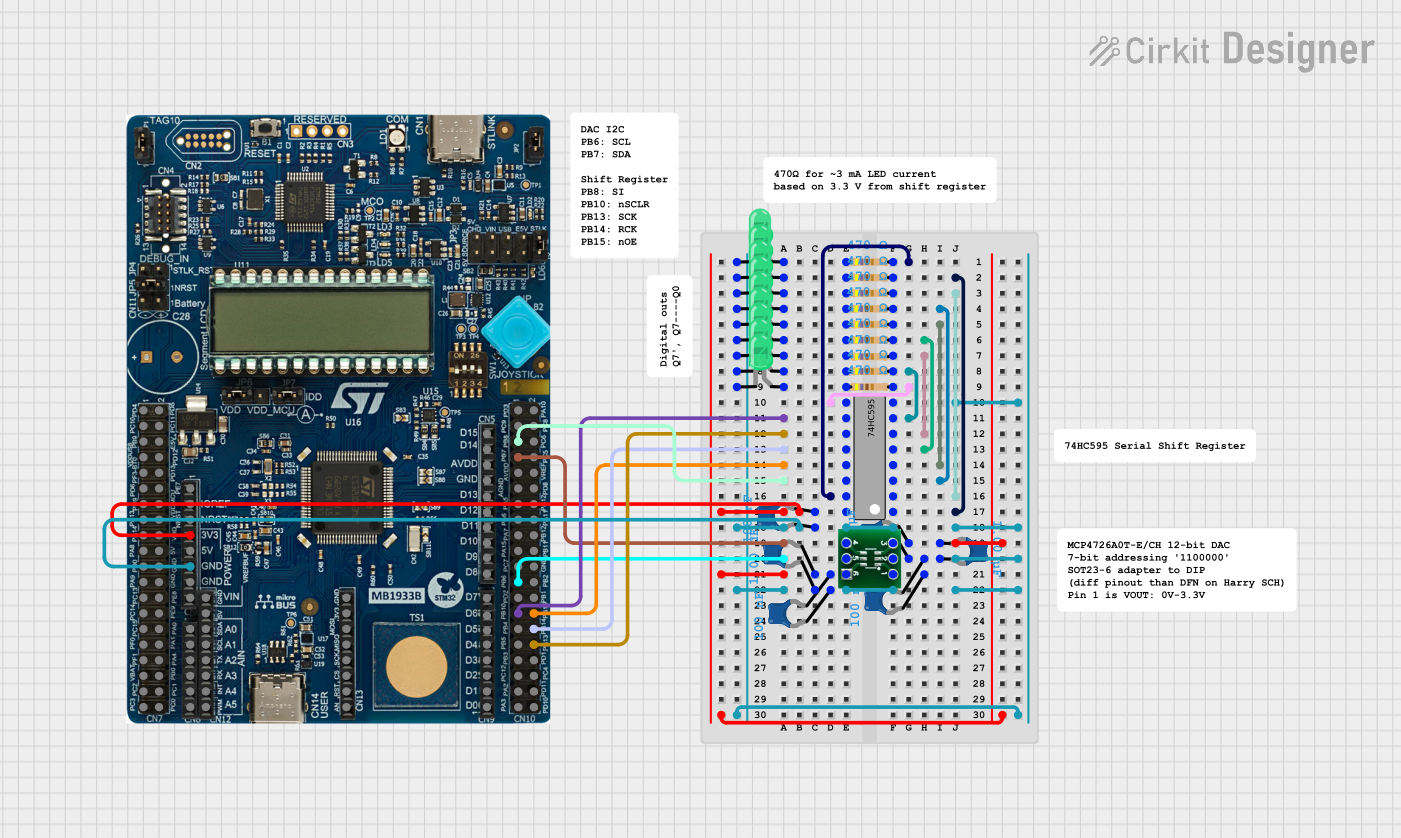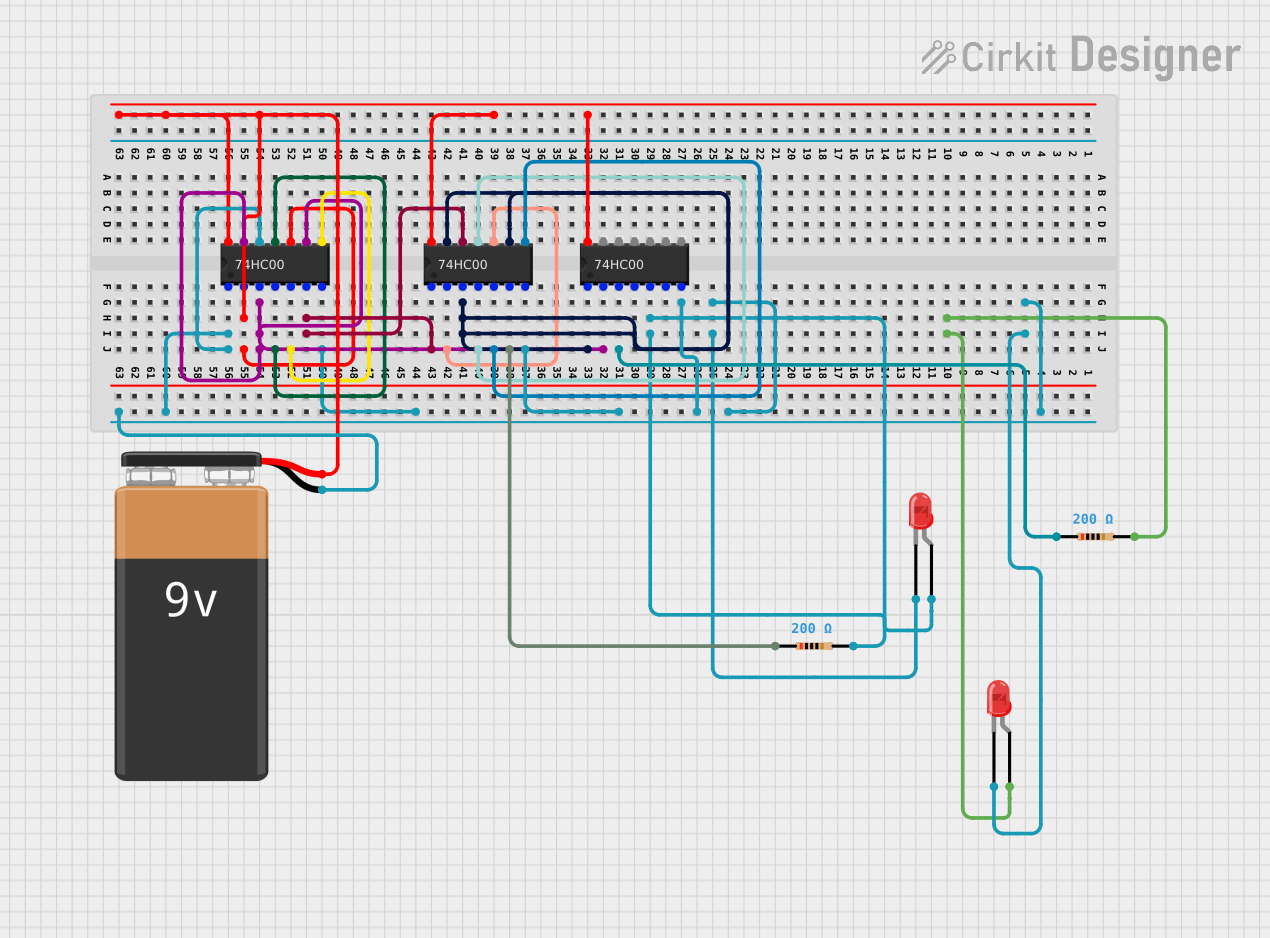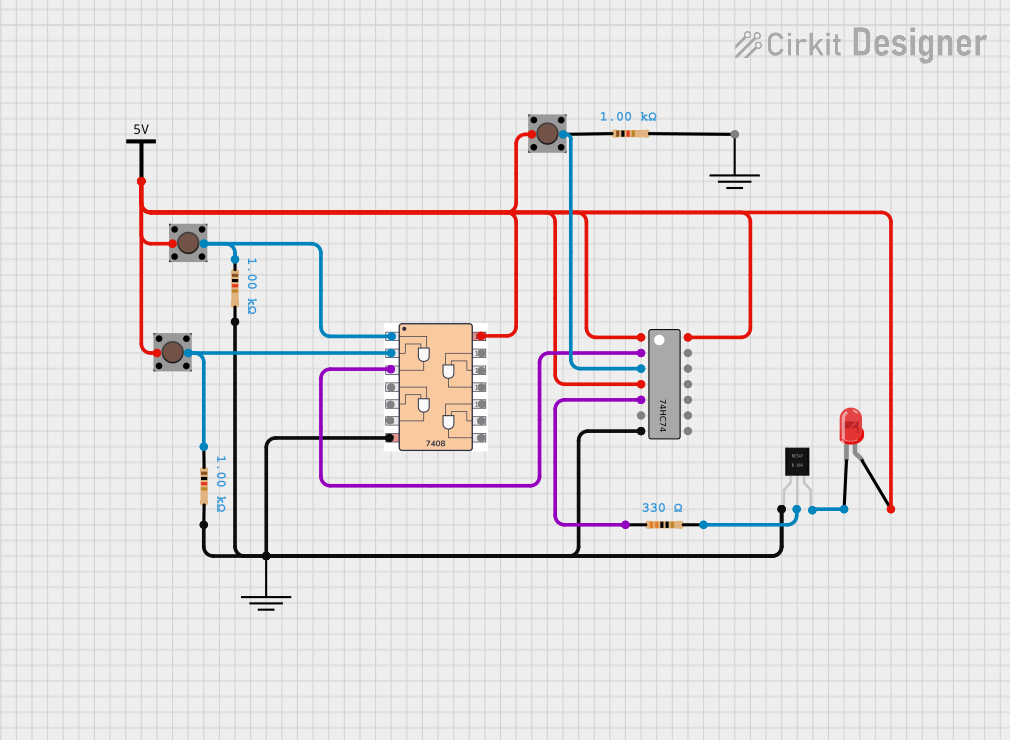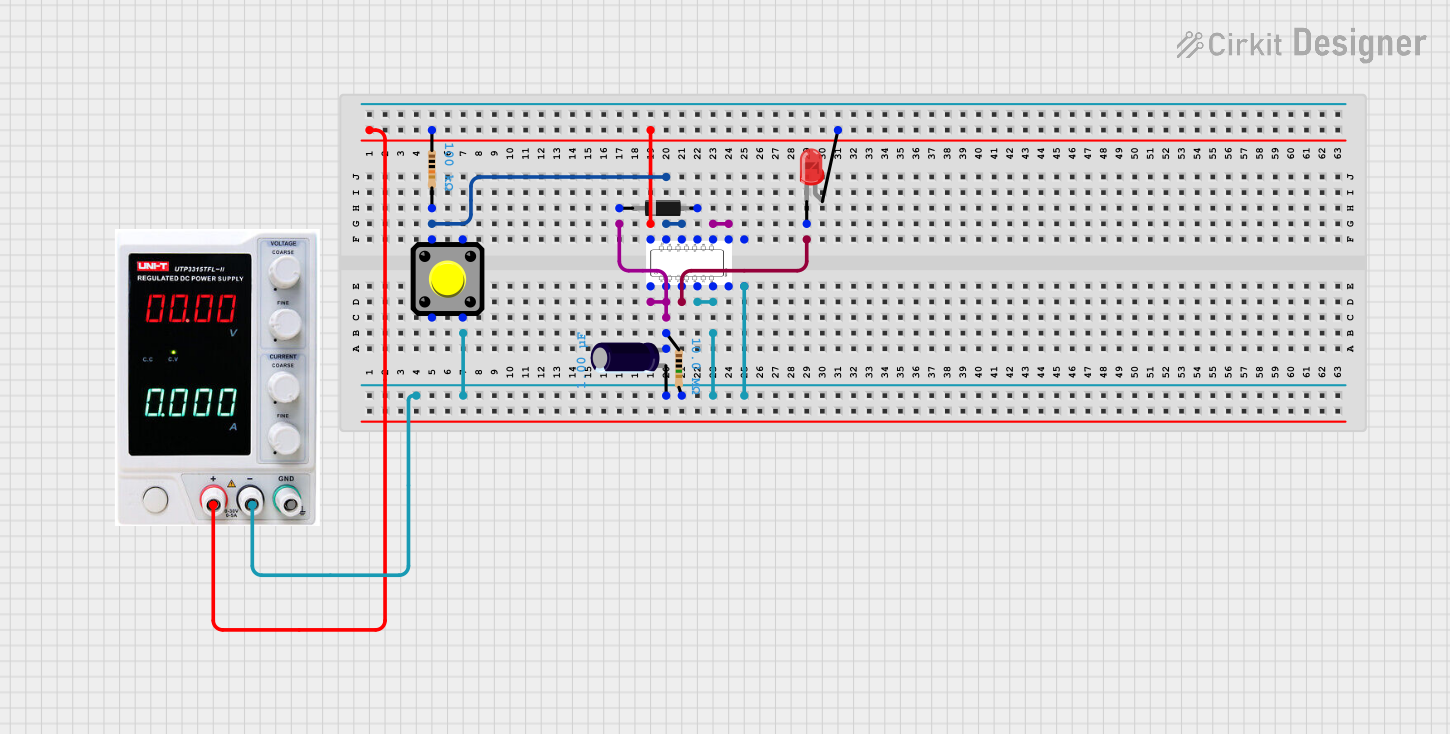
How to Use 74HC00: Examples, Pinouts, and Specs

 Design with 74HC00 in Cirkit Designer
Design with 74HC00 in Cirkit DesignerIntroduction
The 74HC00 is a logic device that contains four independent 2-input NAND gates. It is part of the 74HC family of high-speed CMOS logic integrated circuits. NAND gates are a fundamental building block in digital electronics, as they can be combined to create any other logic gate or digital circuit. The 74HC00 is commonly used in a variety of applications, including:
- Digital logic circuits
- Control systems
- Signal processing
- Computer systems
- Function generators
Explore Projects Built with 74HC00

 Open Project in Cirkit Designer
Open Project in Cirkit Designer
 Open Project in Cirkit Designer
Open Project in Cirkit Designer
 Open Project in Cirkit Designer
Open Project in Cirkit Designer
 Open Project in Cirkit Designer
Open Project in Cirkit DesignerExplore Projects Built with 74HC00

 Open Project in Cirkit Designer
Open Project in Cirkit Designer
 Open Project in Cirkit Designer
Open Project in Cirkit Designer
 Open Project in Cirkit Designer
Open Project in Cirkit Designer
 Open Project in Cirkit Designer
Open Project in Cirkit DesignerTechnical Specifications
Key Technical Details
- Logic Type: CMOS
- Operating Voltage Range: 2V to 6V
- High-Level Input Voltage (Vih): Minimum 70% of Vcc
- Low-Level Input Voltage (Vil): Maximum 30% of Vcc
- Output Current: ±25 mA
- Propagation Delay Time: Approximately 8ns at Vcc = 5V, CL = 15pF
- Operating Temperature Range: -55°C to +125°C
Pin Configuration and Descriptions
| Pin Number | Name | Description |
|---|---|---|
| 1 | 1A | Input A for Gate 1 |
| 2 | 1B | Input B for Gate 1 |
| 3 | 1Y | Output for Gate 1 |
| 4 | 2Y | Output for Gate 2 |
| 5 | 2A | Input A for Gate 2 |
| 6 | 2B | Input B for Gate 2 |
| 7 | GND | Ground (0V) |
| 8 | 3A | Input A for Gate 3 |
| 9 | 3B | Input B for Gate 3 |
| 10 | 3Y | Output for Gate 3 |
| 11 | 4Y | Output for Gate 4 |
| 12 | 4A | Input A for Gate 4 |
| 13 | 4B | Input B for Gate 4 |
| 14 | Vcc | Positive Supply Voltage |
Usage Instructions
How to Use the 74HC00 in a Circuit
- Power Supply: Connect the Vcc pin (14) to a positive supply voltage within the 2V to 6V range. Connect the GND pin (7) to the ground of the circuit.
- Inputs: Apply logic signals to the input pins (1A, 1B, 2A, 2B, 3A, 3B, 4A, 4B) according to the desired logic function.
- Outputs: The output pins (1Y, 2Y, 3Y, 4Y) will provide the NAND result of the corresponding gate inputs.
Important Considerations and Best Practices
- Ensure that the supply voltage does not exceed the maximum rating to prevent damage.
- Inputs should not be left floating; they should be connected to a valid logic level.
- Decoupling capacitors (typically 0.1 µF) should be placed close to the Vcc pin to filter out noise.
- Avoid exceeding the maximum output current to prevent damage to the device.
Example Circuit with Arduino UNO
The following example demonstrates how to use one of the NAND gates of the 74HC00 with an Arduino UNO to create a simple logic circuit.
// Define the Arduino pin numbers for the inputs and output
const int inputPinA = 2;
const int inputPinB = 3;
const int outputPin = 4;
void setup() {
// Configure the input and output pins
pinMode(inputPinA, OUTPUT);
pinMode(inputPinB, OUTPUT);
pinMode(outputPin, INPUT);
}
void loop() {
// Set the inputs to LOW and HIGH, respectively
digitalWrite(inputPinA, LOW);
digitalWrite(inputPinB, HIGH);
// Read the output from the NAND gate
int nandResult = digitalRead(outputPin);
// The result should be HIGH because NAND with one input LOW always gives HIGH
}
In this example, the Arduino controls the inputs to one of the NAND gates on the 74HC00, and the output is read back into the Arduino. Remember to connect the Vcc and GND pins of the 74HC00 to the 5V and GND of the Arduino, respectively.
Troubleshooting and FAQs
Common Issues
- No Output: Ensure that the power supply is connected correctly and that the input pins are not floating.
- Unexpected Output: Verify that the input signals are within the valid logic level range and that the supply voltage is stable.
Solutions and Tips for Troubleshooting
- Check for proper supply voltage and ground connections.
- Use a multimeter to verify the logic levels at the inputs and outputs.
- Ensure that the output current does not exceed the maximum rating by avoiding connecting heavy loads directly to the outputs.
FAQs
Q: Can the 74HC00 be used with TTL logic levels? A: Yes, the 74HC00 is compatible with TTL logic levels when operated within the appropriate voltage range.
Q: What happens if I exceed the recommended operating voltage? A: Exceeding the operating voltage can damage the IC and lead to permanent failure.
Q: Can I connect the outputs of two NAND gates together? A: Directly connecting outputs can cause damage due to contention. Use proper logic design techniques to combine outputs safely.
This documentation provides a comprehensive guide to using the 74HC00 Quad 2-Input NAND Gate. For further information, consult the manufacturer's datasheet and application notes.